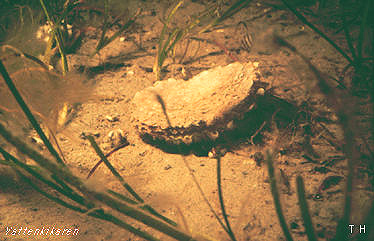|

|
|
Royal dish
From written sources we know that oysters
have been caught in Bohuslän on the Swedish west coast since the
end of the 17th centuary. The counciller Anders Kock was given a monopoly
to catch oysters and as a return service, he had to supply the royal household
with oysters. With time the catches decreased and Kock had trouble keeping
his agreement with the royal court. Certain periods, the catches were
quite abundant, but cold weather and overfishing decimated the populations.
Varying catches
The Swedish catch 1859 has been calculated
to about 40-50 tons. During the 19th centuary, regulations were introduced
controlling season and size, but these were heeded by few. Catches decreased
steadily until 1933 when no oyster statistics were recorded. In the middle
of the fourties, fishing was resumed, with catches varying between 1-116
tons annually. Overfishing and natural variations in the environment have
affected oyster populations throughout history, from the roman empire,
and from France, Denmark and Norway during the 19th centuary. During thousands
of years mankind has tried to compensate for these fluctuations in population.
To succeed, we must know more about how the oyster lives, but also how
they reproduce.

European oyster on a sandy bottom amongst eel grass.
|

|
Page
3 of 5
|

|
|